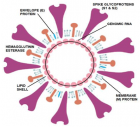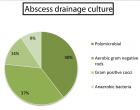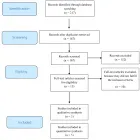Abstract
Research Article
Using Model Classification to detect Bias in Hospital Triaging
Patrick Ting*, Aayaan Sahu, Nishad Wajge, Vineet Rao, Hiresh Poosarla and Phil Mui
Published: 12 June, 2023 | Volume 7 - Issue 1 | Pages: 024-030
Background: In light of the COVID-19 pandemic and the health crisis left in its wake, our goal is to develop extensive machine-learning techniques to provide a clear picture of the treatment, and possible mistreatment, of specific patient demographics during hospital triaging.
Objective: We aim to reveal whether a patient’s treatment and hospital disposition is related to the following attributes - Emergency Severity Index (ESI), gender, employment status, insurance status, race, or ethnicity which our 100 MB dataset included.
Materials and methods: Our work is separated into two parts - the classification task and data analysis. As part of the classification task, we used the k-Nearest-Neighbor classifier, the F1-score, and a random forest. We then analyze the data using SHapley Additive exPlanations (SHAP) values to determine the importance of each attribute.
Results: Our findings show that significance varies for each attribute. Notably, we found that patients with private insurance programs receive better treatment compared to patients with federal-run healthcare programs (e.g. Medicaid, Medicare). Furthermore, a patient’s ethnicity has a greater impact on treatment for patients under 40 years of age for any given ESI level. Surprisingly, our findings show language is not a barrier during treatment.
Discussion and conclusion: We, therefore, conclude that although hospitals may not be doing so intentionally, there is a systemic bias in hospital triaging for specific patient demographics. For future works, we hope to aggregate additional patient data from hospitals to find whether specific demographics of patients receive better healthcare in different parts of the United States.
Read Full Article HTML DOI: 10.29328/journal.abse.1001022 Cite this Article Read Full Article PDF
Keywords:
Hospital triaging; Medical systemic bias; Patient treatment; Public health; Machine learning
References
- Silva JAD, Emi AS, Leão ER, Lopes MCBT, Okuno MFP, Batista REA. Emergency Severity Index: accuracy in risk classification. Einstein (Sao Paulo). 2017 Oct-Dec;15(4):421-427. doi: 10.1590/S1679-45082017AO3964. PMID: 29364364; PMCID: PMC5875154.
- Paulus JK, Kent DM. Predictably unequal: understanding and addressing concerns that algorithmic clinical prediction may increase health disparities. NPJ Digit Med. 2020 Jul 30;3:99. doi: 10.1038/s41746-020-0304-9. PMID: 32821854; PMCID: PMC7393367.
- McHugh M, Tanabe P, McClelland M, Khare RK. More patients are triaged using the Emergency Severity Index than any other triage acuity system in the United States. Acad Emerg Med. 2012 Jan;19(1):106-9. doi: 10.1111/j.1553-2712.2011.01240.x. Epub 2011 Dec 23. PMID: 22211429.
- Jahn, Jaquelyn, and Gabriel Schwartz. “Black People More than Three Times as Likely as White People to Be Killed during a Police Encounter.” News, 8 July 2020, https://www.hsph.harvard.edu/news/hsph-in-the-news/blacks-whites-police-deaths-disparity.
- Gaëlle F. Unpaid Care Work: The Missing Link in the Analysis of Gender ... OECD. Unpaid Care Work: The Missing Link in the Analysis of Gender Gaps in Labour Outcomes, Dec. 2014. https://www.oecd.org/dev/development-gender/Unpaid_care_work.pdf.
- Katherine S. 6 Facts about Economic Inequality in the U.S. Pew Research Center, Pew Research Center, 27 May 2021. https://www.pewresearch.org/fact-tank/2020/02/07/6-facts-about-economic-inequality-in-the-u-s.
- Vigil JM, Coulombe P, Alcock J, Kruger E, Stith SS, Strenth C, Parshall M, Cichowski SB. Patient Ethnicity Affects Triage Assessments and Patient Prioritization in U.S. Department of Veterans Affairs Emergency Departments. Medicine (Baltimore). 2016 Apr;95(14):e3191. doi: 10.1097/MD.0000000000003191. PMID: 27057847; PMCID: PMC4998763.
- Samulowitz A, Gremyr I, Eriksson E, Hensing G. "Brave Men" and "Emotional Women": A Theory-Guided Literature Review on Gender Bias in Health Care and Gendered Norms towards Patients with Chronic Pain. Pain Res Manag. 2018 Feb 25;2018:6358624. doi: 10.1155/2018/6358624. PMID: 29682130; PMCID: PMC5845507.
- Hong WS, Haimovich AD, Taylor RA. Predicting hospital admission at emergency department triage using machine learning. PLoS One. 2018 Jul 20;13(7):e0201016. doi: 10.1371/journal.pone.0201016. PMID: 30028888; PMCID: PMC6054406.
- Chet SD. Racial Disparity in Emergency Department Triage. 23 June 2012. https://www.jem-journal.com/.
- Arslanian-Engoren C. Gender and age bias in triage decisions. J Emerg Nurs. 2000 Apr;26(2):117-24. doi: 10.1016/s0099-1767(00)90053-9. PMID: 10748383.
- Ma'alona M. Hospital Triage and Patient History Data. Kaggle. 3 June 2019, https://www.kaggle.com/datasets/maalona/hospital-triage-and-patient-history-data.
- Lundberg SM, Erion G, Chen H, DeGrave A, Prutkin JM, Nair B, Katz R, Himmelfarb J, Bansal N, Lee SI. From Local Explanations to Global Understanding with Explainable AI for Trees. Nat Mach Intell. 2020 Jan;2(1):56-67. doi: 10.1038/s42256-019-0138-9. Epub 2020 Jan 17. PMID: 32607472; PMCID: PMC7326367.
- Padraig C, Sarah D. k-Nearest neighbour classifiers. Mult Classif Syst. 2007; 54:10.1145/3459665.
- Li Y, Dong M, Kothari R. Classifiability-based omnivariate decision trees. IEEE Trans Neural Netw. 2005 Nov;16(6):1547-60. doi: 10.1109/TNN.2005.852864. PMID: 16342495.
- Leo B. Abstract - University of California, Berkeley. RANDOM FORESTS--RANDOM FEATURES, Sept. 1999. https://www.stat.berkeley.edu/~breiman/random-forests.pdf.
- Zachary Chase L. Thresholding Classifiers to Maximize F1 Score. ArXiv.org. 14 May 2014. https://arxiv.org/abs/1402.1892
- Thomas DG. Ensemble Learning. CSE446: Machine Learning. 4 Sept. 2002. https://courses.cs.washington.edu/courses/cse446/.
- Tim H. 2011 - Wires Computational Statistics - Wiley Online Library. Bootstrap. 3 Sept. 2011. https://wires.onlinelibrary.wiley.com/doi/abs/10.1002/wics.182.
- Katsuya F. Pairwise AcquisitioData Science, Elsevier. 9 Mar 2021. https://www.sciencedirect.com/science/article/pii/S24059n Prediction with Shap Value Interpretation.” The Journal of Finance and 18821000015.
- Vinícius T. Using Shap Values to Explain How Your Machine Learning Model Works. Medium, TowardsDataScience, 5 July 2022. https://towardsdatascience.com/using-shap-values-to-explain-how-your-machine-learning-modelworks-732b3f40e137.
- Prateek J. Bootstrap Sampling: Bootstrap Sampling in Machine Learning. Analytics Vidhya. 21 July 2022. https://www.analyticsvidhya.com/blog/2020/02/what-is-bootstrap-sampling-in-statistics-and-mac hine-learning/.
- Shelton R. The Emergency Severity Index 5-level triage system. Dimens Crit Care Nurs. 2009 Jan-Feb;28(1):9-12. doi: 10.1097/01.DCC.0000325106.28851.89. PMID: 19104244.
Figures:
Similar Articles
-
Assessment and sensitive analysis of biological water risks in water resources with application of classical mass transfer computationsMohammad Gheibi*,Farhad Mahmoudi Jalali,Reza Aghlmand,Amir Takhtravan,Zahra Kian. Assessment and sensitive analysis of biological water risks in water resources with application of classical mass transfer computations. . 2021 doi: 10.29328/journal.abse.1001013; 5: 015-024
-
Using Model Classification to detect Bias in Hospital TriagingPatrick Ting*, Aayaan Sahu, Nishad Wajge, Vineet Rao, Hiresh Poosarla, Phil Mui. Using Model Classification to detect Bias in Hospital Triaging. . 2023 doi: 10.29328/journal.abse.1001022; 7: 024-030
Recently Viewed
-
Leiomyosarcoma in pregnancy: Incidental finding during routine caesarean sectionToon Wen Tang*,Phoon Wai Leng Jessie. Leiomyosarcoma in pregnancy: Incidental finding during routine caesarean section. Clin J Obstet Gynecol. 2021: doi: 10.29328/journal.cjog.1001094; 4: 092-095
-
Adult Neurogenesis: A Review of Current Perspectives and Implications for Neuroscience ResearchAlex, Gideon S*,Olanrewaju Oluwaseun Oke,Joy Wilberforce Ekokojde,Tolulope Judah Gbayisomore,Martina C. Anene-Ogbe,Farounbi Glory,Joshua Ayodele Yusuf. Adult Neurogenesis: A Review of Current Perspectives and Implications for Neuroscience Research. J Neurosci Neurol Disord. 2024: doi: 10.29328/journal.jnnd.1001102; 8: 106-114
-
Late discover of a traumatic cardiac injury: Case reportBenlafqih C,Bouhdadi H*,Bakkali A,Rhissassi J,Sayah R,Laaroussi M. Late discover of a traumatic cardiac injury: Case report. J Cardiol Cardiovasc Med. 2019: doi: 10.29328/journal.jccm.1001048; 4: 100-102
-
A two-phase sonographic study among women with infertility who first had normal sonographic findingsKalu Ochie*,Abraham John C. A two-phase sonographic study among women with infertility who first had normal sonographic findings. Clin J Obstet Gynecol. 2022: doi: 10.29328/journal.cjog.1001117; 5: 101-103
-
Sinonasal Myxoma Extending into the Orbit in a 4-Year Old: A Case PresentationJulian A Purrinos*, Ramzi Younis. Sinonasal Myxoma Extending into the Orbit in a 4-Year Old: A Case Presentation. Arch Case Rep. 2024: doi: 10.29328/journal.acr.1001099; 8: 075-077
Most Viewed
-
Evaluation of Biostimulants Based on Recovered Protein Hydrolysates from Animal By-products as Plant Growth EnhancersH Pérez-Aguilar*, M Lacruz-Asaro, F Arán-Ais. Evaluation of Biostimulants Based on Recovered Protein Hydrolysates from Animal By-products as Plant Growth Enhancers. J Plant Sci Phytopathol. 2023 doi: 10.29328/journal.jpsp.1001104; 7: 042-047
-
Sinonasal Myxoma Extending into the Orbit in a 4-Year Old: A Case PresentationJulian A Purrinos*, Ramzi Younis. Sinonasal Myxoma Extending into the Orbit in a 4-Year Old: A Case Presentation. Arch Case Rep. 2024 doi: 10.29328/journal.acr.1001099; 8: 075-077
-
Feasibility study of magnetic sensing for detecting single-neuron action potentialsDenis Tonini,Kai Wu,Renata Saha,Jian-Ping Wang*. Feasibility study of magnetic sensing for detecting single-neuron action potentials. Ann Biomed Sci Eng. 2022 doi: 10.29328/journal.abse.1001018; 6: 019-029
-
Pediatric Dysgerminoma: Unveiling a Rare Ovarian TumorFaten Limaiem*, Khalil Saffar, Ahmed Halouani. Pediatric Dysgerminoma: Unveiling a Rare Ovarian Tumor. Arch Case Rep. 2024 doi: 10.29328/journal.acr.1001087; 8: 010-013
-
Physical activity can change the physiological and psychological circumstances during COVID-19 pandemic: A narrative reviewKhashayar Maroufi*. Physical activity can change the physiological and psychological circumstances during COVID-19 pandemic: A narrative review. J Sports Med Ther. 2021 doi: 10.29328/journal.jsmt.1001051; 6: 001-007

HSPI: We're glad you're here. Please click "create a new Query" if you are a new visitor to our website and need further information from us.
If you are already a member of our network and need to keep track of any developments regarding a question you have already submitted, click "take me to my Query."
















































































































































